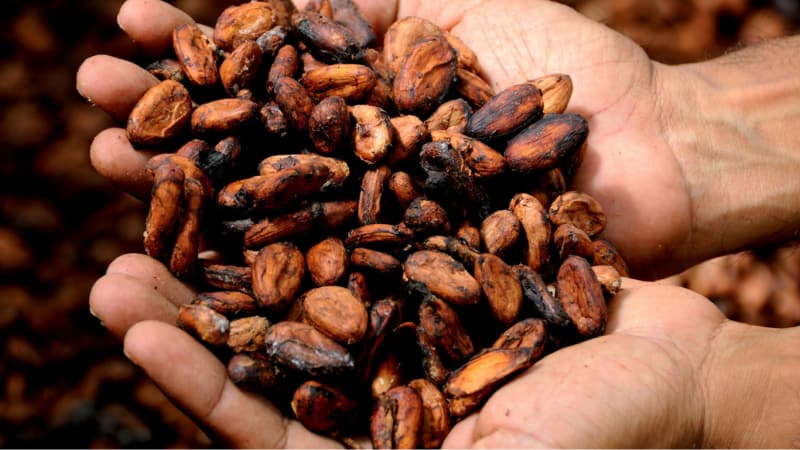Ceremonial cocoa, in the way it is prepared and in the taste itself, is very different from that which appears on our tables. It is not only a ceremony to consume it, but also to prepare it according to certain rules.
Ceremonial cocoa what is it?
Cocoa found its way to Europe thanks to Hernan Cortez, who, after his expedition to the Aztecs, spread the word in raptures about this drink, still unknown to the Spaniards. Cacao itself was probably learned about 1,000 BC by the Olmecs, who inhabited the Central American peninsula. Eventually cacao became a popular product on our tables as well, in a very different form from its traditional one. What is ceremonial cocoa? Ceremonial cocoa can only be prepared from specific native cocoa types that have not been altered by man. We distinguish between:
- Criollo – a variety that is native to Guatemala, but we can also find it in Venezuela.
- Chuncho – originating in Peru.
These varieties are characterized by small and sensitive beans that do not tolerate chemicals.
Ceremonial cocoa is raw, non-fat cocoa that undergoes gentle fermentation. Thanks to this process, it is possible to obtain the right aroma and better bioavailability of the active ingredients it contains. In its appearance, cocoa resembles a pressed paste.
How is ceremonial cocoa paste made?
The paste is made by following certain rules:
- fermentation of cocoa beans,
- heating and drying the beans at low temperatures,
- grinding cocoa by traditional methods in stone vessels
Cocoa’s nutritional properties?
Hernan Cortez himself, while consuming cocoa, noticed how valuable it had on his body. He felt stronger, more focused and less hungry. What nutritional values does cacao have?
- Rich in iron – 7.3 mg per 100 g.
- Contains 54% fat.
- 31% carbohydrates – with a preponderance of fiber,
- 11% protein,
- 3% are polyphenols – organic chemical compounds with intense antioxidant activity.
- Rich in magnesium – supports the nervous system, muscles, reduces susceptibility to stress and fatigue,
- contains large amounts of calcium, which strengthens the osteoarticular system, prevents fractures and hormonal bone changes,
- has a high content of copper, which helps transport iron in the body, regulates glucose metabolism, and is a catalyst for many processes in the body.
Thanks to its nutrients, ceremonial cocoa has a good effect on the body of pregnant women, as well as it is recommended to drink it for people with anemia, as well as those who experience stressful situations or do mental work. In addition, ceremonial cocoa promotes concentration, helps unlock emotions, relaxes, and increases libido.

To whom is ceremonial cocoa not recommended?
Due to some of its ingredients, native cocoa is not recommended for people taking antidepressants, those suffering from high blood pressure, and those struggling with heart disease due to the theobromine contained in cocoa, which can cause an accelerated heartbeat.
Ceremonial cocoa
Ceremonial cocoa is most often consumed during a cocoa ceremony, which is a kind of ritual of joy, love and gratitude. Lovers of this beverage meet in a circle. Very often ceremonial cocoa is a part of women’s circle, men’s circle, workshops related to body awareness and many other forms of work with consciousness, celebration of life, but also during meditation. Cocoa is most often prepared during a ceremony, but this is not the rule. Spices such as honey, vanilla, cardamom, nutmeg, chili or cinnamon can be added to the drink. Importantly, spices are best added at the very end of cocoa preparation. During the ceremony, participants drink the cacao and celebrate their values at the same time, such as love of nature (the Aztecs were associated with the Goddess of Cacao), gratitude, or love in a general sense. The consumption of the drink is accompanied by an intention, so each participant has an intention with which they abide during the ceremony. Cocoa is drunk slowly, in small sips in full awareness of the taste and focusing on the present moment and the accompanying intention. The entire ritual may be accompanied by the burning of candles, palo santo, white sage, or the playing of various instruments. During the celebration and festivities, there may also be communal dancing, singing, and as we mentioned earlier – it may be a prelude to a specific workshop, part of which is the consumption of ceremonial cocoa.
Thus, ceremonial cocoa is a properly prepared beverage that is part of a shared celebration of the moment in a circle of others. Ceremonial cocoa ceremonies are held throughout the country and are available to anyone who wishes to participate. This ceremony is therefore not just for friends and loved ones, the circles often include people who don’t know each other, who simply celebrate the time spent together while consuming cocoa.

